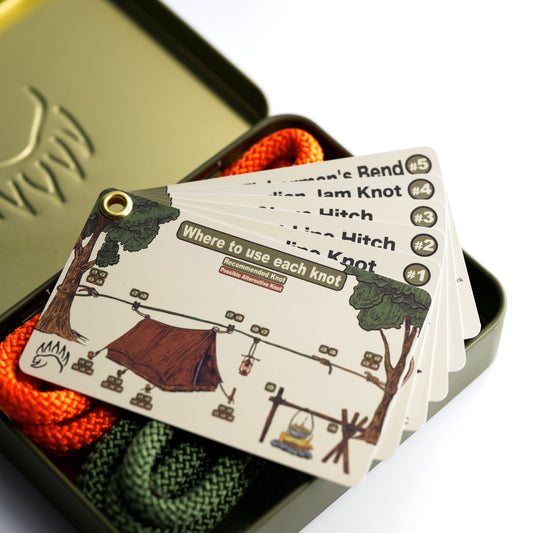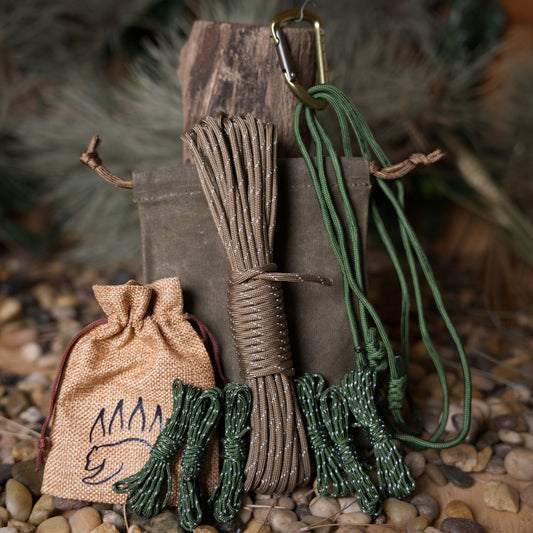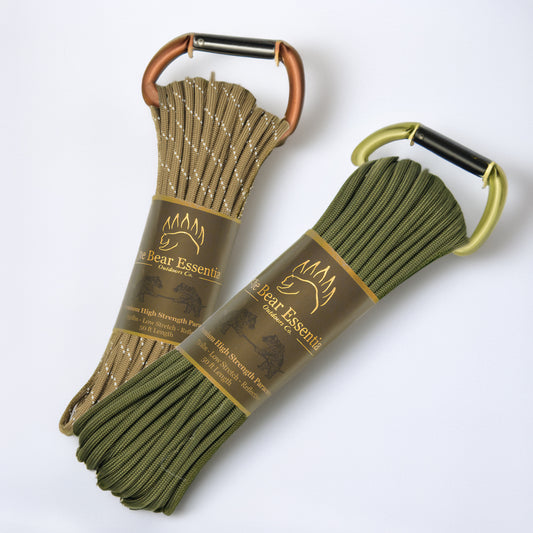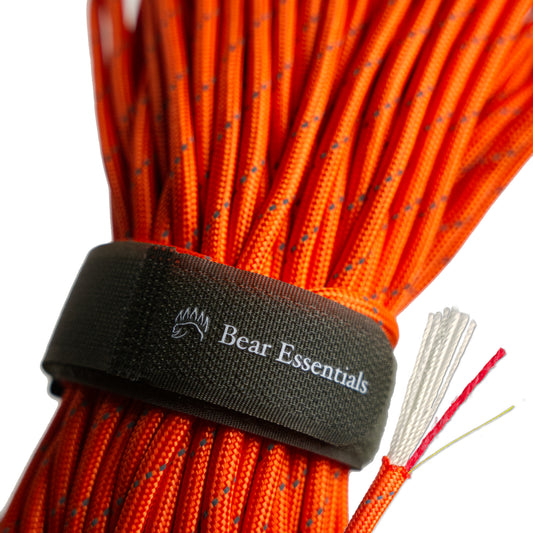How to Tie The Backhanded Hitch
Usage
Often used to secure loads under tension, the Backhand Hitch excels in situations requiring a hitch that can be tied and untied while the rope is loaded. Known in stage rigging and film production as the High Tie, this knot is valued for its ability to hold securely and release without jamming—even under strain.
Why Learn the Backhand Hitch?
This knot offers a combination of strength, simplicity, and utility. It can be tied under tension, making it ideal when the load can’t be slackened. It also remains non-jamming under high loads, making it perfect for repeated use. While not as widely known, it’s a powerful option for quick, secure anchoring.
Common Uses
- Utility & Transport: Tying down cargo to roof racks or trailers. Temporarily securing loads with quick release.
- Boating & Marine: Tying off to rails or cleats. Docking situations where ropes need to release cleanly.
- Stage Rigging / Film Production: Used as the High Tie to suspend and adjust set pieces safely.
- Bushcraft & Outdoors: Temporary rigging or anchoring gear while maintaining quick-release ability.
ABOK Number
(Ashley Book of Knots)
Other Names
Category
|
Notable Features
- Tied Under Load: Can be tied and untied while the rope is under tension.
- Non-Jamming: Releases easily even after bearing high loads.
- Friction Control: Forms a Munter Hitch at its core, adding load control.
Variations
- Extra Turn Variation: Add a second wrap before the tuck to increase grip.
- Slipped Backhand Hitch: Incorporates a bight for faster release.
Similar Knots
Clove Hitch
- Pros: Simple and quick to tie.
- Cons: Prone to slipping under variable tension.
Rolling Hitch
- Pros: Excellent for resisting axial pull.
- Cons: More difficult to untie after loading.
Timber Hitch
- Pros: Tightens under strain and easy to untie.
- Cons: Best for cylindrical loads like logs.
Round Turn and Two Half Hitches
- Pros: Great all-purpose hitch with high security.
- Cons: Requires more rope and more time to tie.
- Learn the round turn and two half hitches.
Magnus Hitch
- Pros: Resists twisting and holds well.
- Cons: Slightly more complex than the Backhand Hitch.
History
The Backhand Hitch has deep roots in traditional maritime and agricultural settings, where a quick, secure hitch was needed to tie off to spars, rails, or posts. Its name likely originates from the unique backhanded motion used to complete the knot, distinguishing it from standard hitch techniques.
The knot appears in Clifford W. Ashley’s The Ashley Book of Knots (entries #1725 and #1852), and while it was never widely known, it found niche popularity in boating, farming, and stagecraft due to its non-jamming and tension-tolerant properties.
History Section Citation/Source:
- Ashley, C. W. (1944). The Ashley Book of Knots. Doubleday.
- Lee, R. S. (1996). Knots for Boaters. International Marine/McGraw-Hill.
Security Level
The Backhand Hitch offers reliable grip and load control, while maintaining ease of release even after tensioning. It is secure under high load but best used for temporary or light-to-moderate-duty applications.
Downsides
- Friction Can Damage Rope: If not dressed well or heavily loaded.
- Requires Practice: Backhanded motion may feel awkward at first.
- Not Suitable for Life Safety Loads: Should not be used in climbing or critical applications.
Structure
- Pass the rope around the object (post, rail, or ring).
- Cross the working end over the standing part.
- Using a backhanded motion, tuck the working end under the standing part and through the loop.
- Tighten by pulling both ends; the base of the knot forms a Munter Hitch, secured by locking half hitches.
- For slipped version, pass a bight instead of the tail for easy release.
FAQ
What is the Backhand Hitch used for?
For securing loads under tension or tying off where release is needed even under strain.
Is it easy to untie after load?
Yes, it is designed to be non-jamming, even under significant pressure.
Is the Backhand Hitch safe for critical applications?
No, it should not be used where knot failure could be dangerous.
How does it compare to the Round Turn and Two Half Hitches?
The Backhand Hitch can be tied in a single motion and allows release under load, while the Round Turn provides higher security but requires more rope and time.
Important Notes on Safety
While the Backhand Hitch offers quick, reliable tension management, it is best suited for temporary anchoring or load control. Always inspect the knot under load before trusting it









